The Guide To Suit Jacket Pockets
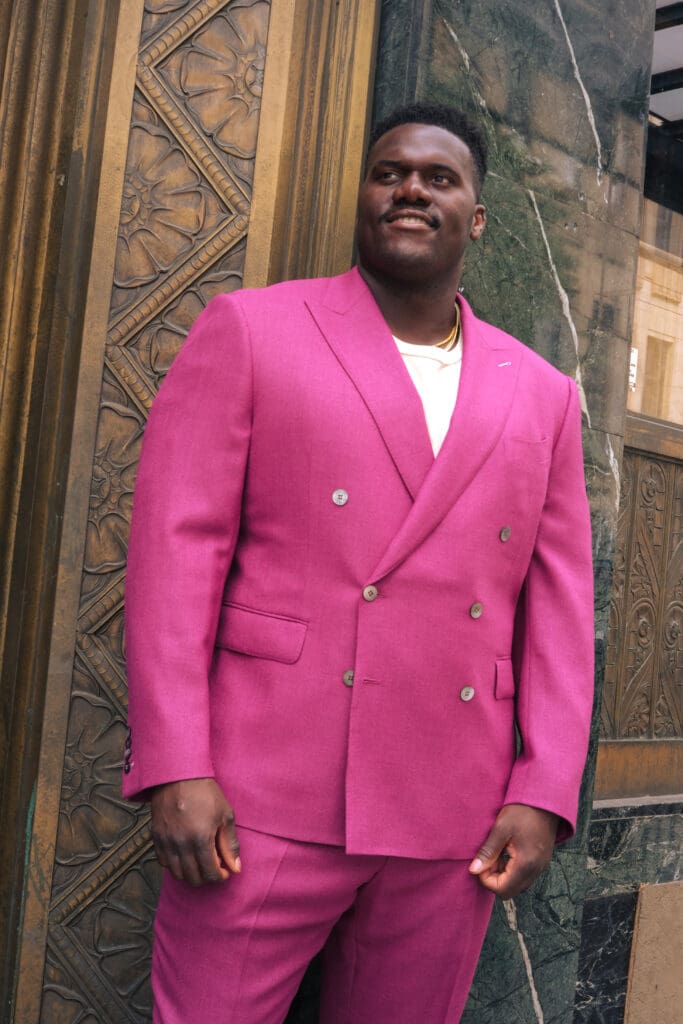
THE GUIDE TO SUIT POCKETS
By Hannah Villanueva
This is our first part in a guide on design elements for a made-to-measure suit.
Designing A Custom Suit Jacket
Choosing pockets for a suit can be a creative and intentional choice. Up until the 20th century, tailoring details were once entirely up to the control of a client, a tailor, and the materials available. Tailoring revolved around catering to the needs and desires of a client while upholding craftsmanship. Today, the era of “ready to wear” clothing and the impact of globalization has changed how we dress. We live in an era of the most clothing output at any point in history and there is a growing loss of intention in style.
When choosing a suit from “off the rack”, there are limits. Choices such as lapels, pockets, sizing, and color have all been standardized with very little freedom in terms of distinct design. In contrast, the alternative is the custom made-to-measure suit. This is a piece designed by the client and a designer, with the tailors of a factory using custom patterns from your measurements.
When designing a made-to-measure suit, there is a blank page where possibilities are (almost) unlimited. Values such as quality, sustainability, and timelessness can truly shine in this regard. Both chest pockets and lower pockets aren’t only about functionality, these design choices can also be elements of interest.
Choosing the pockets for your suit can be one way to veer into the creative world of suits and create a garment that has authenticity behind it.
Chest Pockets
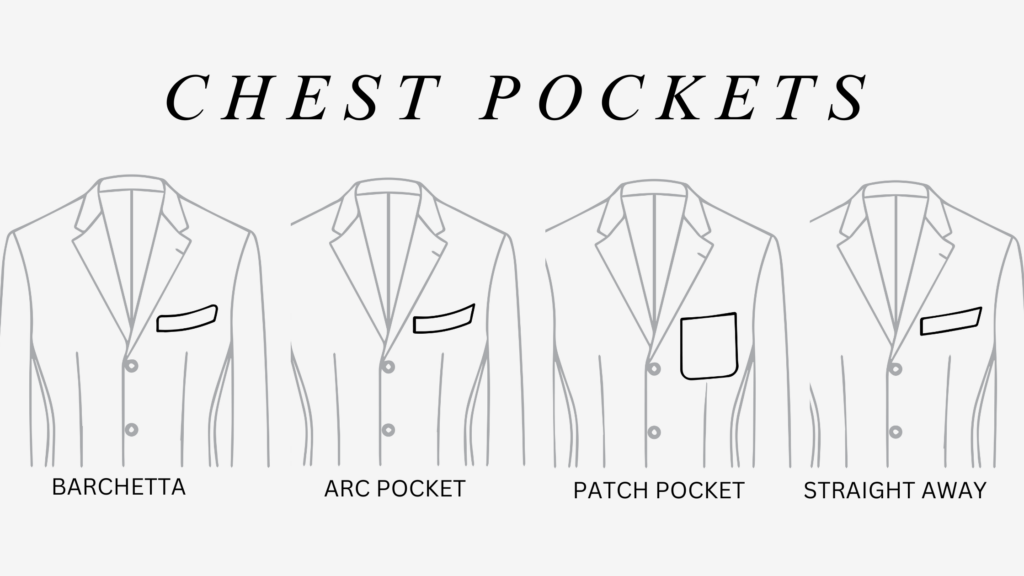
- Ship Shape/Barchetta
This rounded pocket comes from the Italian word “barchetta” and means “little boat”. The design has origins in Italian sartorial style or “sprezzatura”, the art of nonchalance while still looking fine. It simply feels…cool. The essence of sartorial style reflects the timeless high quality design of Italy. The barchetta pocket is a contrast to the harder lines of straight chest pockets. It is a creative choice with tailoring detail of excellence.
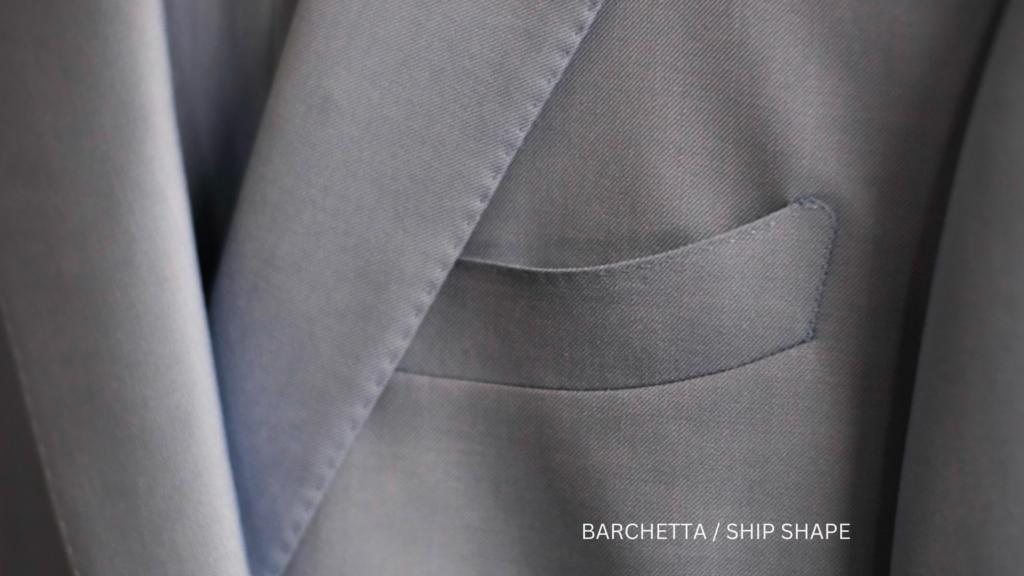
- Arc Pocket
There’s a list of reasons why the arc pocket is a tried and true favorite. It holds versatility across time and it still brings details of shape to the design of a jacket. Similar to the barchetta, this is a curved design but has a much sharper rectangular shape–which can help in achieving a traditional design while still bringing in a small element of flare.
- Patch Pocket
Often, the patch pocket brings to mind the styles from the 1970s with patterned slim jackets, and flared trousers with patch pockets. Over the decades, it has evolved into a pocket that offers the option for an homage to vintage style or simply as a way to bring in a more casual option to a garment.
- Straight away pocket
The straight away pocket is a standard option for any suit. It can be great for events where you feel best in sticking to minimal extravagance or instead draw attention to other tailoring details such as lapels.
Lower Pockets
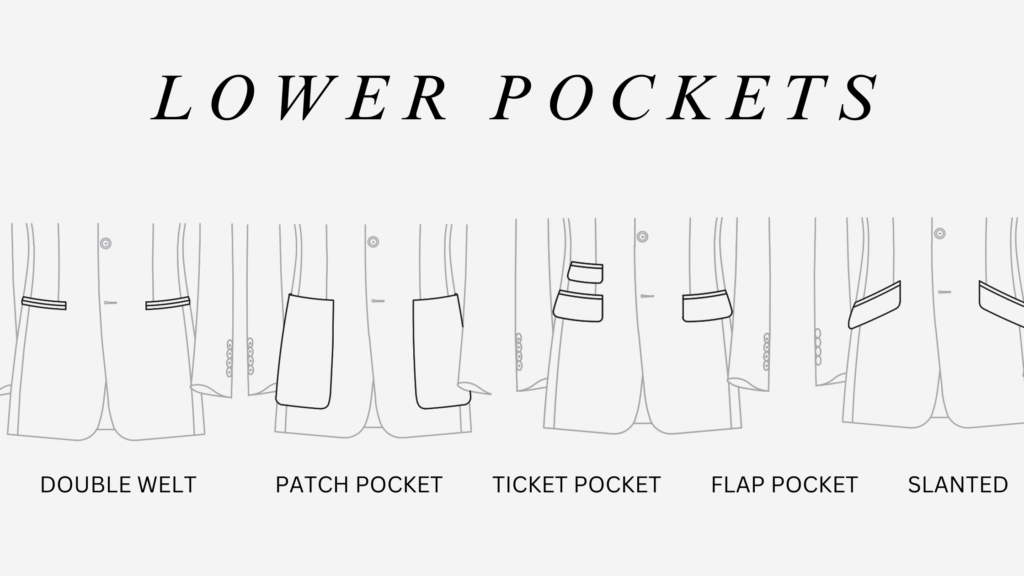
An important thing to consider with exterior pockets aren’t how many things they can hold, but more about how they pull together the appearance of the suit and body.
- The Double Welt pocket
Also known as the jetted or double-besom pocket, this pocket is the sleeker option and provides a more minimalistic look. The beauty of this pocket is in the subtlety of it, while still bringing the desired elements of a suit together. It can be seen on tuxedos or smoking jackets especially when there are patterns with abundant detailing. This is an excellent choice for a formal suit.
2. The Patch Pocket
For a casual design, the patch pocket is usually the standard and has a multitude of options with shape and angle. It can be ideal for reworking the usual style of a traditional suit as well as creating an impressive sport coat. The patch pocket is a visually striking element that holds the color of a suit together well.
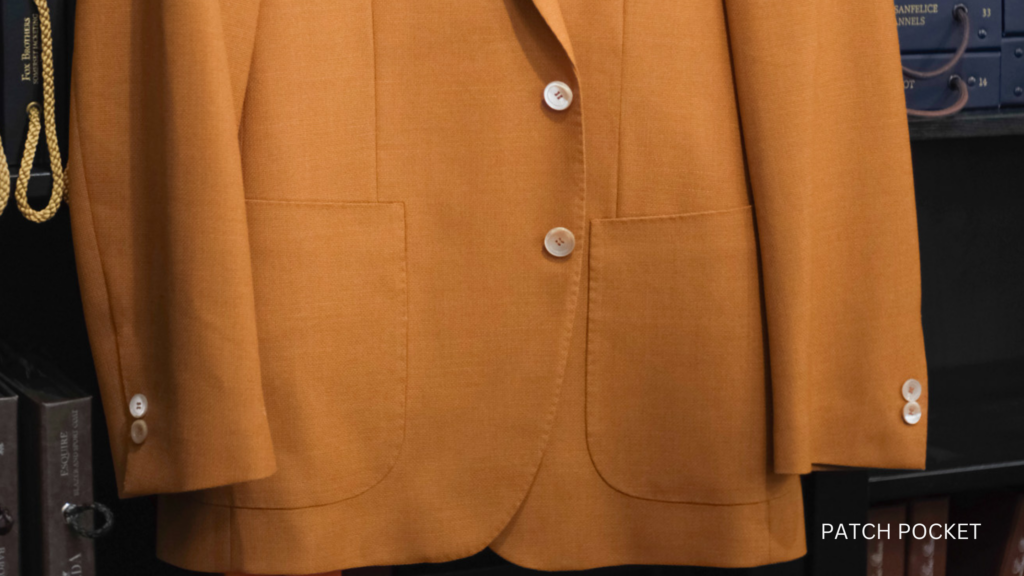
3. The Flap Pocket
Possibly the most common of all the pockets, the flap pocket is perfect for a range of formality. It is commonly found in a tuxedo and smoking jacket and other evening wear. However we’ve seen it designed on printed summer suits too.
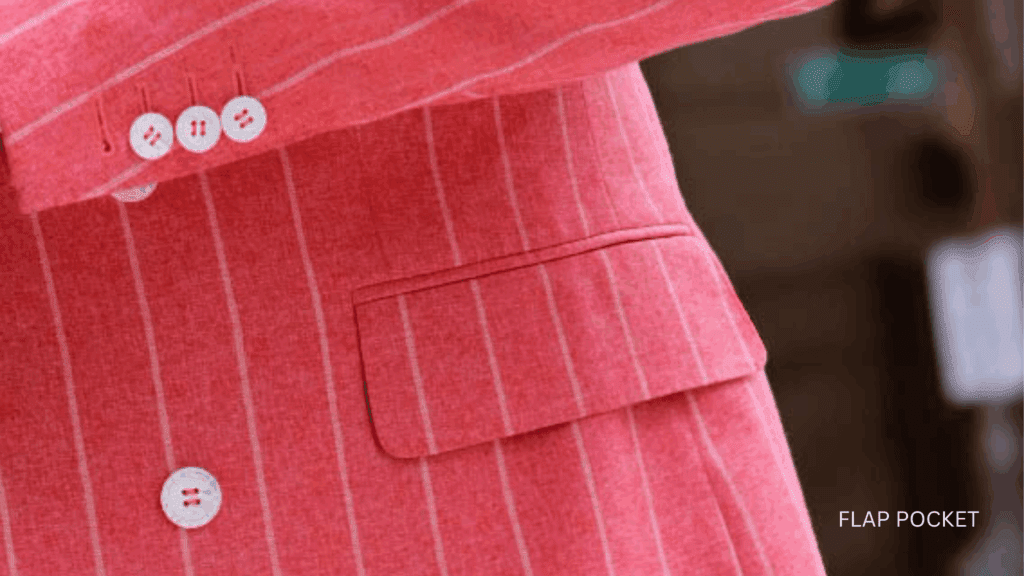
4. A Ticket Pocket
There are many stories of how the ticket pocket originated, with some saying it was for placing a ticket for the opera or for storing a train ticket stub. This pocket can be either a smaller flap or jetted pocket. In addition to breaking the symmetry of a suit, it is an overall interesting element.
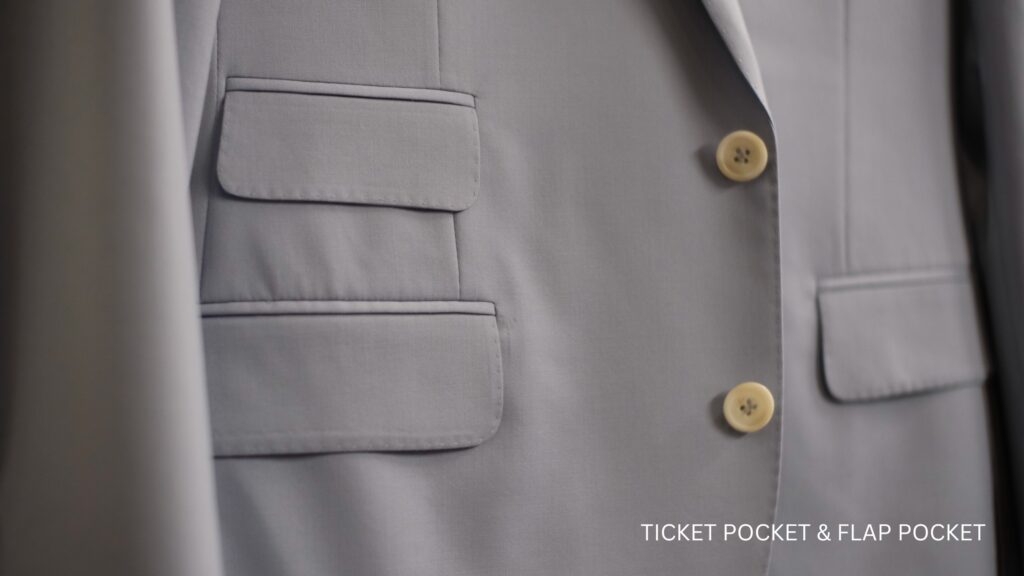
5. Slanted Pockets
The slanted pocket is a suitable option (no pun intended) for accentuating the waist. It can be a possibility for all of the above pockets and is useful when designing a suit that may need less of a boxier fit and more of a curved look. Ultimately, it comes down to individual preference.
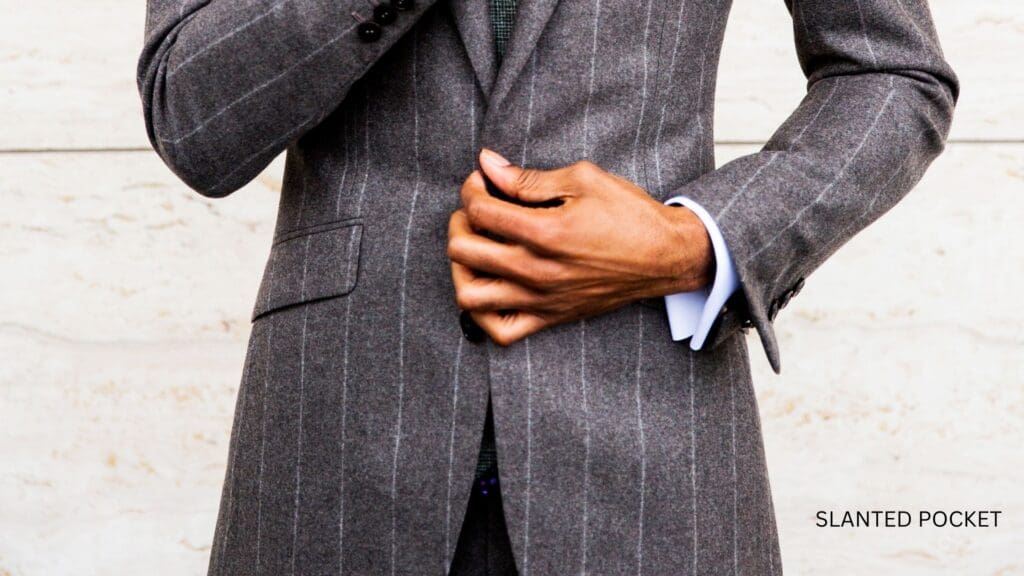
And that’s the world of suit pockets! Well, almost. There are a plethora of options in designing a suit. With our designers, we work with you to hone in a style that results in something that truly meets your style and needs. Need more inspiration for your next style? Take a look at these five uniquely designed wedding suits.